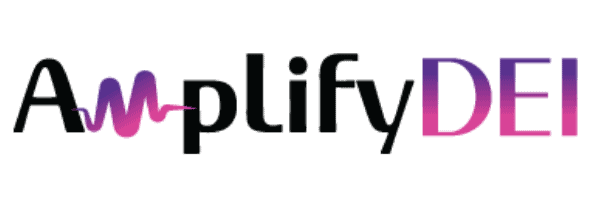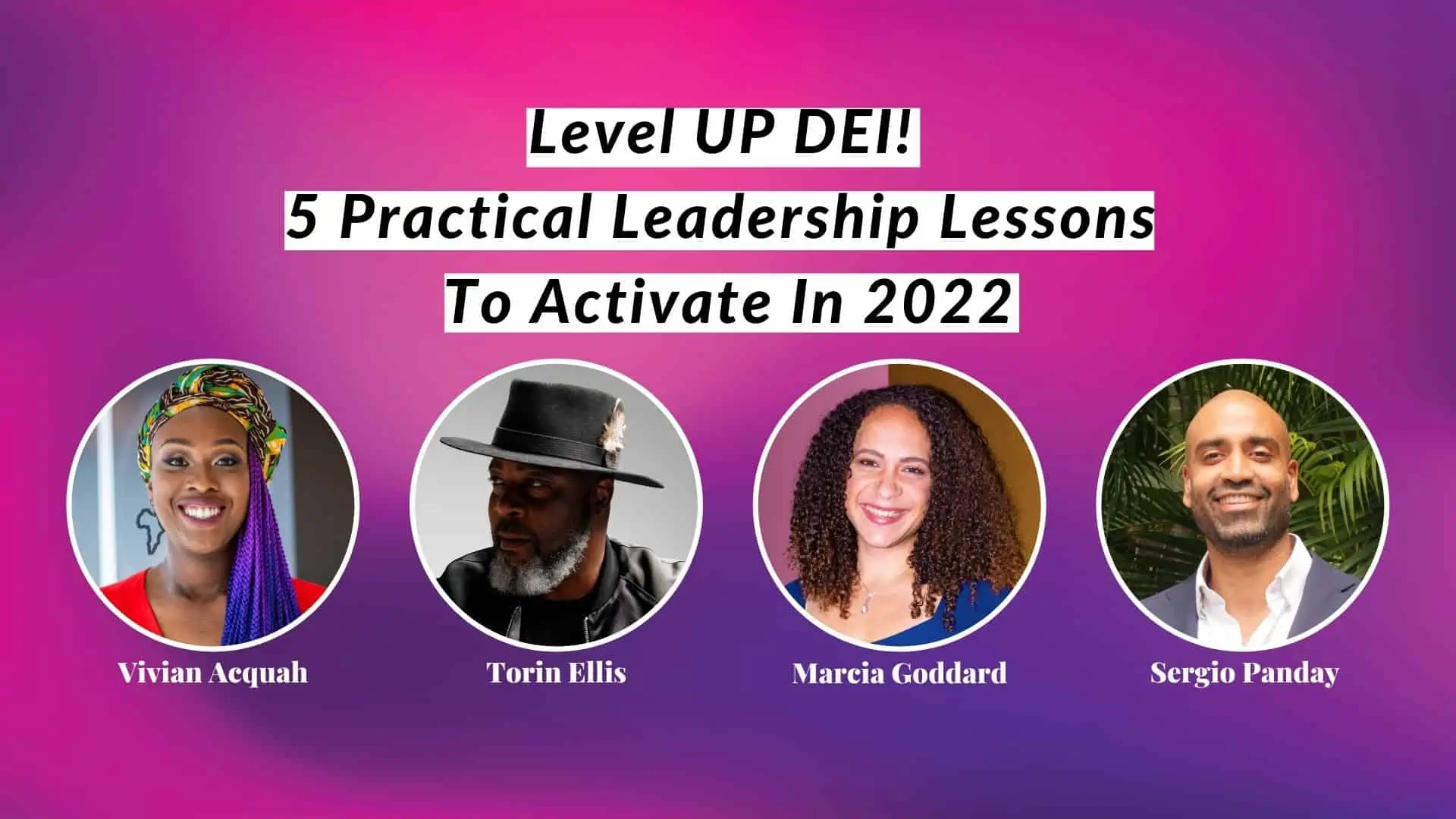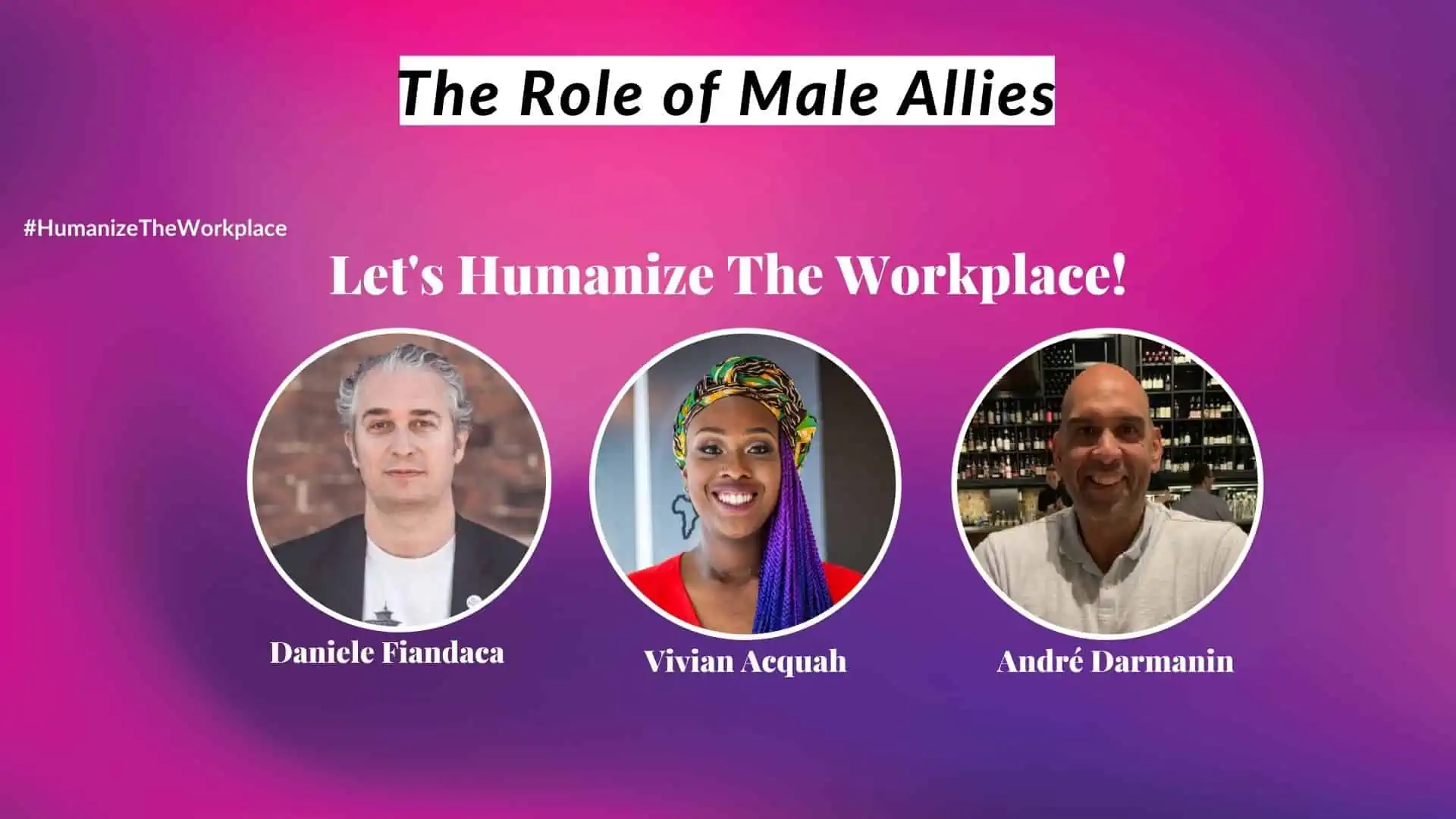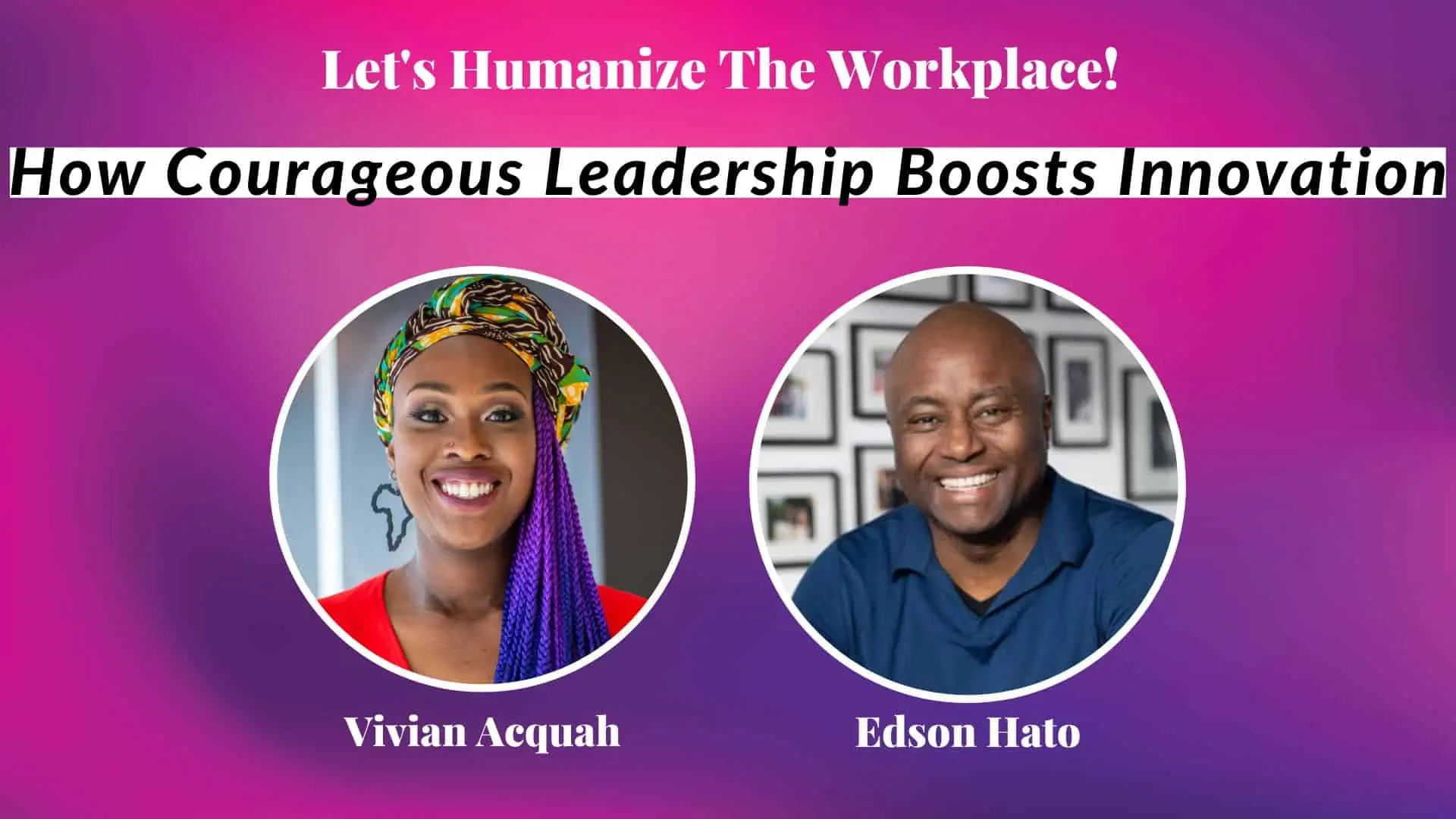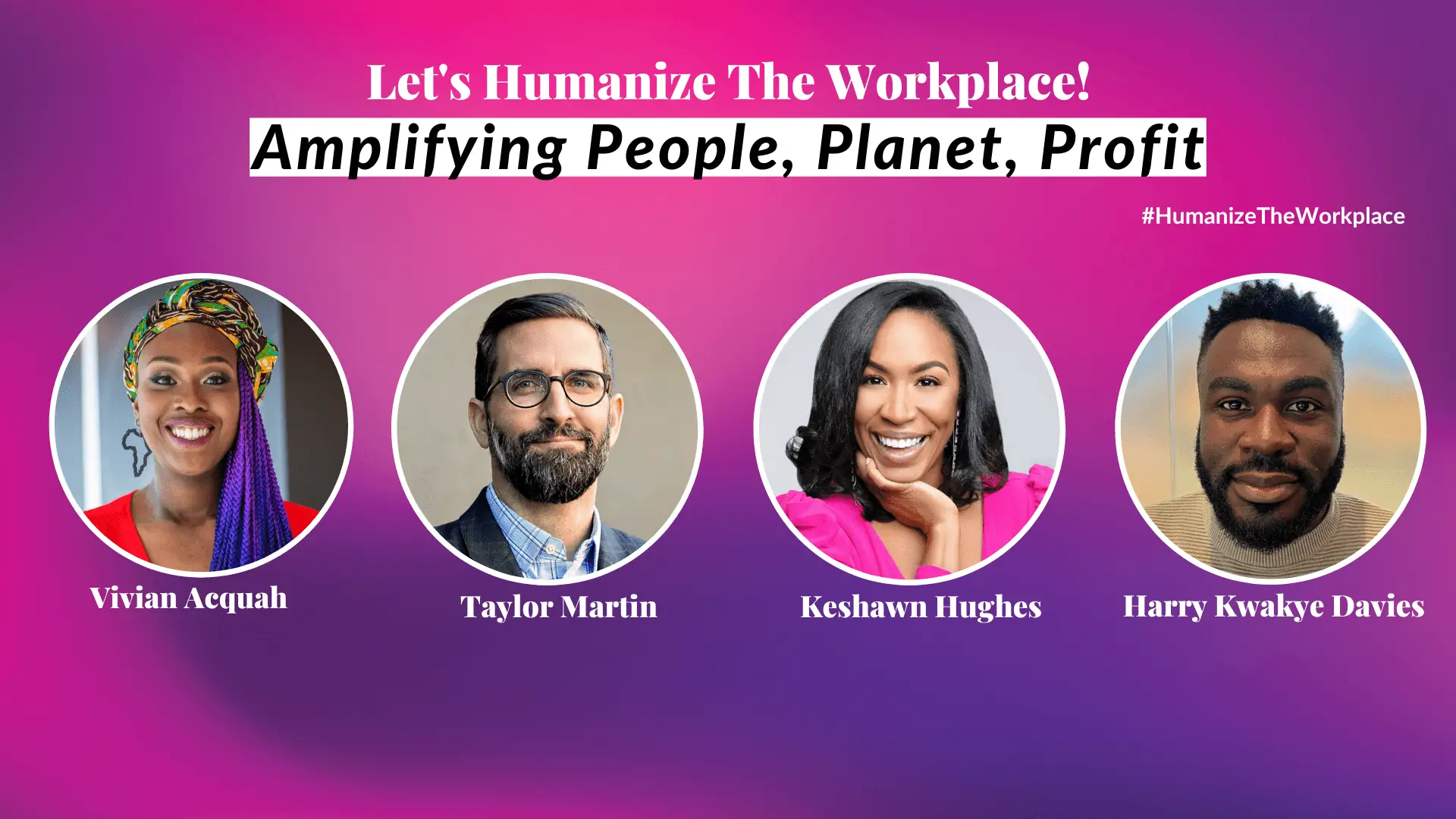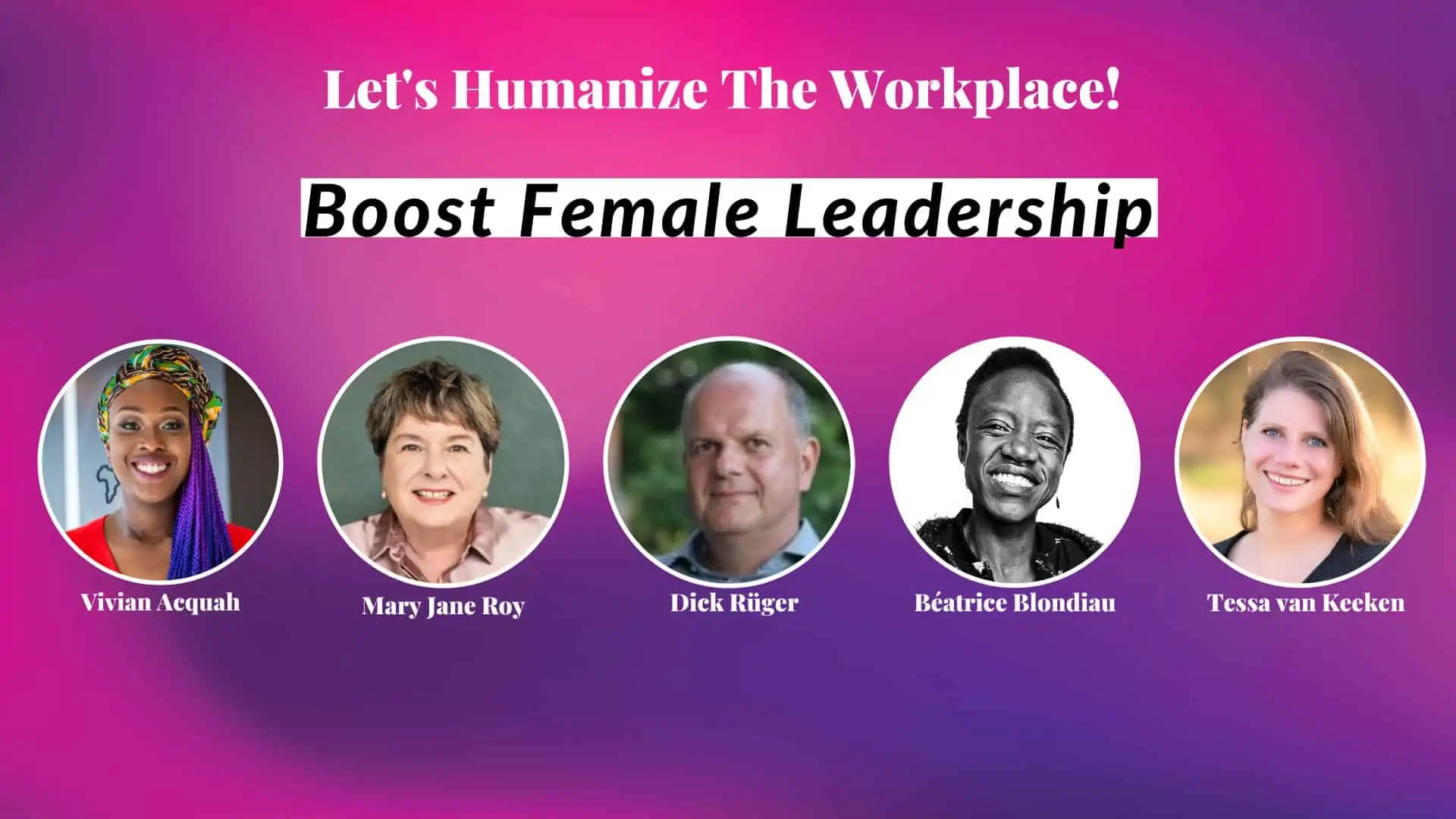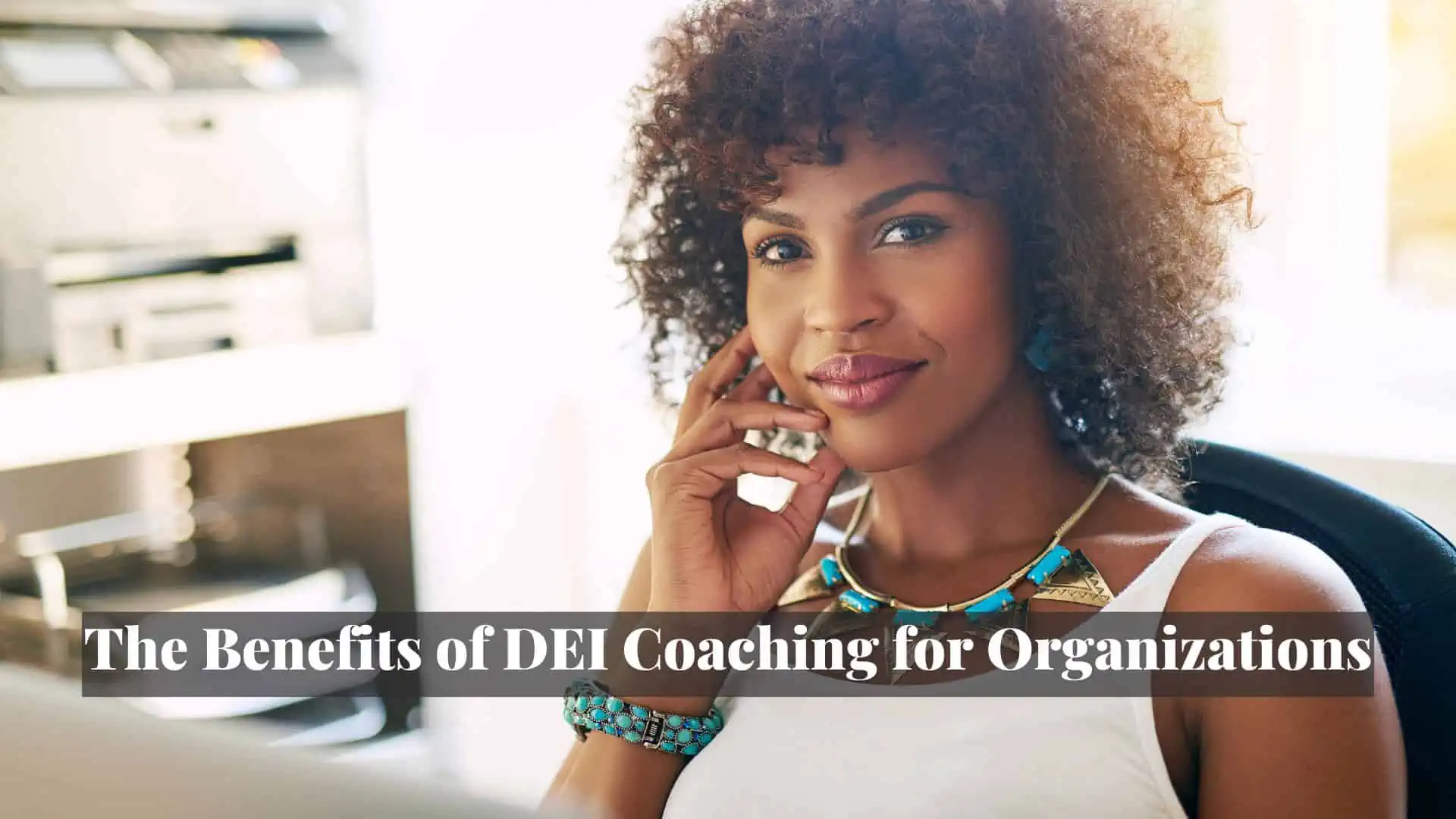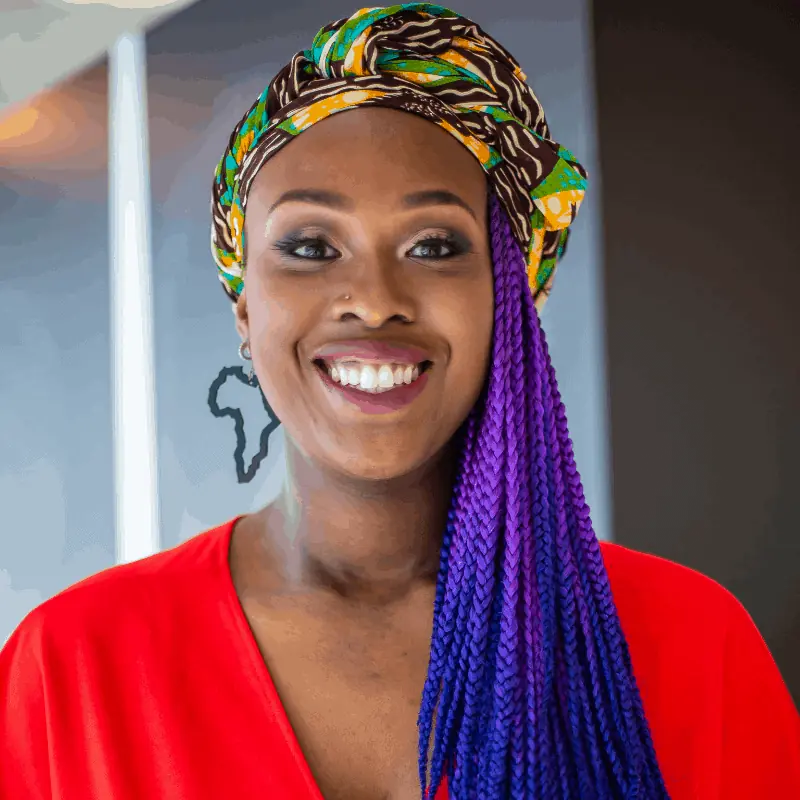We always want to find balance. Celebrating wins is equally important as exposing challenges. Calling out injustices is There have been a lot of new and interesting workplace trends in the last few years. Most notably, the continuation of work-from-home and the Great Resignation movements are shaping and shifting how we work worldwide.
Humanize The Workplace
And with all of these changes, we need to stop and think: how can we humanize the workplace? How can we get to a place where all people are welcomed, included, and valued for their contributions? After all, a big reason people are leaving jobs during the Great Resignation is that they do not feel valued or accepted for who they are; they will seek out workplaces that align with their values.
As these shifts are made, we have to keep talking about it. DEI (Diversity, Equity, and Inclusion) doesn’t just happen on its own—it’s work and its complex work.
To talk about how to level up DEI in 2022 amid a changing work world, I had a few panellists join me for a conversation on Let’s Humanize the Workplace.
The guests were:
- Torin Ellis, an activist entrepreneur and motivational DEI speaker;
- Dr Marcia Goddard, a neuroscientist set on breaking stereotypes in the workplace;
- Sergio Panday, who works to increase ethnic diversity in senior leadership;
- Vivian Acquah, host / inclusive Workplace Wellness Advocate.
Together we discussed the need to humanize the workplace, immigration, rebranding DEI, and practical steps to level up DEI.
Humanizing the Workplace: Current Workplace Trends
We’re talking about humanizing the workplace, but the first question is, why? Why is this necessary to do? Humanizing the workplace is even more critical than ever before, given all of the changes over the last two years of the pandemic.
It is essential because:
- Social issues are polarizing people into different “camps” with a lack of mutual understanding.
- Isolation from the pandemic has made people crave human connection.
- Remote and online work make connecting with other people more challenging due to a lack of eye contact and proximity.
- Challenges from the pandemic exacerbated existing company issues, and employees are no longer willing to put up with it.
Despite all the trendy, emerging conversations about blockchain, AI, and automation changing the way we live and work, those advances in technology don’t always represent the here and now. Many people are still struggling with how to provide for their family or feel fulfilled in their work and role. So, we need to remember that humanity comes first, not just the constant cycle of technological advancements.
“We have to make sure that we don’t forget that we’re not all square boxes on the screen. We’re not 2D images—we are people with personalities and feelings, and we have layers. But that’s more difficult to share remotely, which means that we need to level up in humanizing the workplace.” -Dr. Marcia Goddard
How Immigration Relates to Diversity and Inclusion
Most Western countries are facing a new phenomenon called the Great Resignation, where people are leaving their companies in droves, seeking out better opportunities elsewhere. There are so many reasons why this is happening. One of the big ones is that companies are not aligning themselves with what their employees want.
They are not acting with transparency or authenticity and are not inclusive and welcoming spaces.
And what a lot of companies are still missing is that there are people with diverse abilities all around. And, through immigration, we can actually tap into the superpowers of someone who comes from a different background and skillset.
The conversation around immigration is complex, but it is an essential part of DEI. When we discuss the power of diversity, immigration has a big influence in it.
Here are some essential elements to consider:
- Immigration can help solve fundamental issues surrounding employee shortages.
- Immigration impacts people for generations; first and third-generation immigrants have very different attitudes and ideas—all viewpoints need to be heard and valued.
- Immigration is often wrapped up in our biases of people who are different from us. Increased self-awareness of biases can help us more openly embrace the beautiful diversity of immigration.
“It’s so weird that we are in 2022, and we are not thinking outside of the box. We are not activating people or their super talents or the superpowers to maybe it’s possible for an immigrant to work here. Maybe it’s possible for somebody who doesn’t speak the language or isn’t from here to apply certain things that they learned in their country.” -Vivian Acquah
Practical Leadership Ideas to Level Up DEI
As many people start returning to the workplace after the pandemic, there is an opportunity to make changes. Leaders have an opportunity to level up DEI in the workplace and make it a welcoming and inclusive environment for all employees.
Here are some of the ways leaders can make positive changes:
- Understand that there will be some gaps. For younger generations of employees, this time during the pandemic will be very impactful—they don’t have the years of experience that older generations do on how to interact in a social workplace and lean on each other for support. This will take learning and adjustments to overcome.
- Provide employees with autonomy. Especially given that people have worked autonomously from home for two years, employers need to continue to respect and honour their employee’s antonym in the workplace.
- Be congruent and consistent in decision making. Employees are looking for leadership that they can align with and respect, so sound-decision making is essential.
- Provide flexibility and freedom in work. People are burned out and exhausted after a challenging two years. Providing options for flexibility and freedom will help people claim back their time, energy, and enthusiasm.
- Use mentorship to inspire and encourage others. So much can be accomplished through mentorship in the workplace, and leaders can use this tool to lift up and elevate everyone’s unique skills and contributions.
Some of the other practical ways to level up DEI in the workplace is surrounding hiring practices. One of the most impactful changes can be by being transparent about wages. New laws in New York made headlines recently as they put in a law that said all companies need to disclose wages in their job descriptions. This is a first step to levelling the playing field between applicants and removing potential biases.
“Sure, the work must continue to get done. But can it get done in pods? Can it get done in sprints? Can it get done in smaller windows of time?
Does it have to be a four-day workweek? No, it doesn’t have to be a four-day workweek because, for many individuals, they’re just simply going to try to cram the 60 or 80 hours that they were accustomed to into those four days.
So, I want people to feel like they have the autonomy, the freedom to just simply do what needs to be done.” -Torin Ellis
Rebranding DEI
Depending on the industry, some workplaces are still in a place that’s miles away from understanding and embracing DEI. Much of the corporate world, especially in traditional fields like banking, have managed to exist and thrive without really embracing DEI. Or, it’s possible that they have embraced part of it—diversity (hired new executives)—but not the other part—inclusion (making people actually feel welcomed).
Rebranding DEI is not about changing the core, fundamental values of diversity, equity, and inclusion.
Instead, it is understanding the audience and catering your message towards them. Some people operate from a position of fragility, where they don’t want to have their feelings hurt.
Others are operating on the fatigue side, where they are tired of the conversation that doesn’t really change things. Understanding these different starting points can help us intensify efforts to bring people into DEI and communicate it with them in a way they connect with.
Understanding where people are coming from also requires empathy and active listening.
To bring someone closer towards DEI, you need to know where they are starting. Even if you totally disagree with what they are saying, try to not go directly on the offensive but operate from a place of empathy—listen to them and then start that journey together.
“DEI can use a little bit of a rebranding. I feel that it’s too much of the victim role … it comes into this charitable bucket … And I think we need to start positioning DEI as what it is: it adds value!
It adds value to leadership teams, it adds different perspectives, it helps in more balanced decision making … I think once it’s branded like that, it will be agenda point number one, and then things will start moving.” -Sergio Panday
Conclusion
DEI is complex work because, well, people are complex. We can’t just wave a magic wand and expect that people, leaders, and companies will all change overnight.
However, it is possible to continue to have these conversations, level up our DEI work, hold each other accountable, and take tangible steps to improve our workplaces one by one so that our children have a better world.
If you enjoy conversations about DEI and are ready to level up your own DEI involvement, check out Amplify DEI to learn more about her work as an Inclusive Workplace Wellness Advocate, how to humanize the workplace, and what we can all do to amplify and activate DEI.
